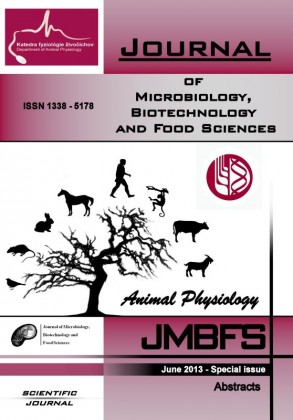ALA-D AS AN INDICATOR OF LEAD POISONING AMONG HUNTED BIRDS
Keywords:
dehydratase, biomarker, waterfowl, lead poisoning, PbAbstract
The major causes of lead (Pb) poisoning in waterbirds (mostly Anseriformes) are lead pellets from ammunition sources and fishing sinkers which may be ingested by the mistake by birds during foraging. They are being dissolved and got into the bloodstream causing a poisoning. To evaluate this exposition of particular specimens, biomarkers as the activity of δ-aminolevulinic acid dehydratase in blood can be used. These measurements may be done in blood samples taken from birds during the ringing or the trapping. However, the use of this biomarker for hunted birds is still scarcely evaluated which is the significant lack of knowledge in respect of world-wide hunting activity and easiness of material collection. Such measurements are faster and cheaper in comparison to Pb determination in blood with Atomic Absorption Spectrometry. They are not as precise as AAS method but they better show the real impact of Pb on the physiology of the organism. In this study we present the results of the measurements of ALA-d activity in blood of hunted birds (Mallards and Coots). The samples were taken immediately after the shot from the heart to K2EDTA vials. The activity was measured according to the standard European method. Lead was positively determined in the majority of blood sample. The relationship between Pb level and ALA-d activity was found.Downloads
Download data is not yet available.
Downloads
Published
2013-06-06
How to Cite
Jakub Binkowski, Ã…Âukasz, ZyÅ›k, B., Guzik, M., Stawarz, R., Åaciak, T., WojtaÅ›, W., Formicki, G., & GreÅ„, A. (2013). ALA-D AS AN INDICATOR OF LEAD POISONING AMONG HUNTED BIRDS. Journal of Microbiology, Biotechnology and Food Sciences, 2(Abstracts special issue), 1. Retrieved from https://office2.jmbfs.org/index.php/JMBFS/article/view/7507
Issue
Section
Biotechnology
License
Copyright (c) 2013 Ã…Âukasz Jakub Binkowski, Bartłomiej ZyÅ›k, Marek Guzik, Robert Stawarz, Tomasz Åaciak, Włodzimierz WojtaÅ›, Grzegorz Formicki, Agnieszka GreÅ„

This work is licensed under a Creative Commons Attribution 4.0 International License.
All papers published in the Journal of Microbiology, Biotechnology and Food Sciences are published under a CC-BY licence (CC-BY 4.0). Published materials can be shared (copy and redistribute the material in any medium or format) and adapted (remix, transform, and build upon the material for any purpose, even commercially) with specifying the author(s).

